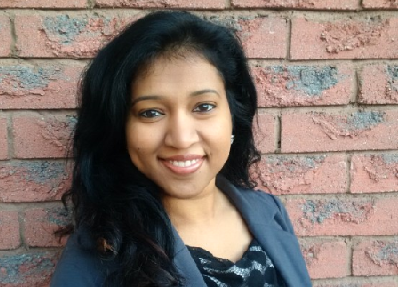An Interview with Sutha Balasingham
An Interview with Sutha Balasingham
By Manny Kalra
June 2023

Sutha led the development of an Integrated Human Services Plan for Community and Health Services, which has 2,500+ staff delivering programs such as Housing, Homelessness, Paramedics Services, Long-Term Care, Social Assistance, and Public Health.
Sutha was also tasked with overseeing the advance planning as Planning Chief for Department Emergency Operations Centre for COVID-19 Pandemic to address emerging human services issues as well as recovery planning.
OMSSA: During your time as a Planning Chief for Department Emergency Operations Centre for COVID-19 to address human services, what did you find to be your biggest challenge and opportunity with regard to the pandemic response from a human service perspective?
Sutha Balasingham (SB): During the height of the pandemic, I was redeployed to more of a planning and coordinating role, as one initiative involved coordinating with partners such as United Way of Greater Toronto (UWGT), Ontario Health, NGOs like the Red Cross as well as public health to monitor emerging community needs, as well as to target resources to neighbourhoods and populations that were hardest-hit by COVID-19. Within our department, we have a unique arrangement of programs under one commissioner and public health is part of our department.
We know the pandemic was the epicenter and was having differential impacts on marginalized communities. Our work with partners essentially centered around bringing an equity lens to the response in an effort to bridge gaps so that marginalized communities could have access to the resources and information they needed to protect themselves. Other initiatives that we focused on included reaching out to community organizations to provide public health messages and facts as opposed to the misinformation and myths that may have been floating around.
In regard to the response, there was one emergency operation center to specifically work with the Provincial Government and Ontario Public Health as they were providing directions. With one operations centre, the human services response became insufficient which led to the establishment of the Departmental Emergency Operations Center. This allowed us to look at how we would respond from a human services perspective to the emergencies that we were seeing on the ground and some of the initiatives that were planned included mobile testing sites, multilingual outreach to address misinformation, or safe places to self-isolate if the home environment wasn’t suitable for that.
When the vaccines did become available, the collaborations with our community partners were instrumental in continuing to keep that equity lens to vaccination campaigns to ensure that outreach was targeted to marginalized communities to remove barriers and increase their opportunity to get vaccines.
Some of the challenges that we faced included the loss of outreach opportunities, connecting with the community, and in-person interaction. As a result, there was a slight adaptation period for the virtual setting and connecting to our partners, different networks or expanding our current networks. The other challenge we encountered was regarding the Incident Management System (IMS); despite having knowledge of the IMS, nothing could have prepared us for what we were facing at the scale and pace we were facing it. The establishment of those connection points and reaching out to communities were some of the main challenges.
One idea that should be stressed is that these efforts were made possible by not one person or organization, but rather collectively by working together in a concerted manner. It was incredible to see how organizations put aside their differences and formed responsive partnerships for the broader good of the community.
OMSSA: With your experience in both municipal government and non-governmental organizations, what are what some challenges members should be aware of and opportunities that members should utilize?
SB: Municipal governments are closest to the community than any other level and so community organizations and agencies can be embedded within communities at a more thorough level. It is through that lived experience that they are able to develop such in-depth insights regarding issues members encounter in the community every day. This can be used as leverage to build a stronger argument for investment in human services.
In terms of challenges, a key challenge is the need continues to outpace the resources available. With that trying to be fair and equitable with the allocation of resources to the community, agencies that are serving our vulnerable population continue to be a challenge for us. Due to finite resources, there are some difficult decisions that need to be made with regard to funding and resource allocation.
Community agencies are an important vehicle or tool that engages in advocacy work. However, we have the opportunity to leverage real human stories and qualitative data to be able to strengthen the need for investment in human services for our communities. Both community organizations and not-for-profit agencies can be important partners of governments wanting to continuously improve through innovation and collaborations to serve diverse communities and populations with increasingly complex needs.
So, I would say, leverage them as partners to continue to keep a focus on human services in our communities, because we are all human service providers trying to strive for healthier, connected, and more socially included communities.
OMSSA: As head of strategic initiatives for the community and health services division at York Region, what are your priorities in human services delivery for the Region?
SB: Community and health services have both help components which include public health, paramedics and long-term care to an extent, and then you have human services under one umbrella. This allows us to have great opportunities to address the whole spectrum of social determinants of health in a coordinated and collaborative manner, allowing us to have more opportunities to interact with other services and creating those integrated opportunities.
We have a department with approximately 3,500 employees and my role in the Commissioner’s office is to oversee the different programs and provide leadership to members of our staff. My priorities are on initiatives that have cross-branch ad departmental nature to the commissioner. This is a particular process that promotes integration along with strategic and efficient perspectives on addressing human services and Gabs with the aim to strengthen our profession and leadership capacity to perform as a better front-runner in human services.
Mental health inclusion is something that came up as a result of the pandemic from employees having a burnout due to being overworked and exhausted, so it was vital that we supported our staff’s well-being in order to continue serving our communities.
Since our work is by the people for the people, it is vital that our staff is healthy, engaged, and included with a strong sense of belonging, to be able to continue serving vulnerable members of the community to the best of their abilities.
To provide an overview, my team’s key priorities include:
- Departmental strategic planning – to enable the provision of integrated human services to our communities
- Centre of excellence for human services program reviews and evaluations – to be strategic and efficient with our resources to address human services needs and gaps
- Policy community of practice – to strengthen professional and leadership capacity to across the department
- Departmental staff engagement and inclusion initiatives – to promote a culture of wellness, equity, diversity and inclusion
OMSSA: Throughout your extensive career, you have been involved with many human service associations/organizations, what motivated you to become involved with OMSSA?
SB: As a big supporter of associations and power in the collective, OMSSA is such an integral association in the human services sector and has the ability to harness the power of membership to be able to put forward strong and needed perspectives on human services to other levels of government.

OMSSA provides all who are individually challenged for needing to continue to engage in professional development an opportunity to pool their resources together, and the professional development of our staff with continuous learning and growth, which has become important for staff members on a personal level so they can continue to evolve.
As a facilitator, OMSSA is proactively communicating the value of an investment in human services, in a coordinated and systemic manner. My initial involvement began with OMSSA through the Policy Advisory Committee and it led me to believe that I could contribute more to support OMSSA’s goals as they aligned with my passion and purpose. That for me was a motivating factor for me in terms of investing my time and in becoming a board member with OMSSA.
OMSSA: Aside from work we all need something to help us unwind, what is one of your hobbies or passions that you enjoy in your own time?
SB: This one is a tough one to answer based on just picking one passion, it would have to be being physically active. As most of my time is intellectual such as reading or learning a new skill, especially through the pandemic, but the silver lining is being physically active. This recently led me to get my first gym membership.
Through the pandemic, I also got a puppy and it was great to come home and head out for a walk or a run. When I was five years old, I was really into Bharatanatyam (classical dance from Tamil Naidu, India) and that is something that I enjoy on a more regular basis.
It also helps to be physically active and allows your brain to rest from the constant state of thinking and allows it to focus on body movements, and surroundings. The physical stimulation and activity provide a calm feeling with some exercise.
OMSSA: Thank you, Sutha
About the Author
Manny Kalra is a third-year Public Relations Student at Humber College joining OMSSA as a Communications Intern as of January 2023.



